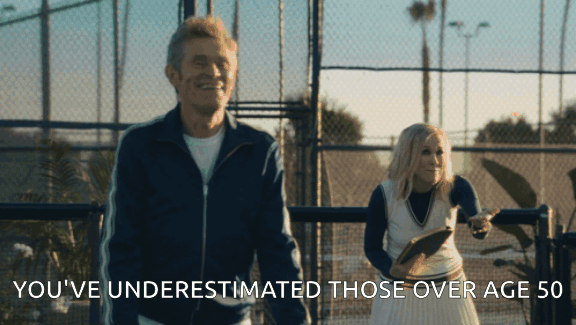What If Everything We Thought We Knew About Older Adults Was Wrong?
Here’s the uncomfortable truth.
Our understanding of age is built on outdated assumptions that no longer reflect how people are living, working, and aging today.
We still view aging through the lens of decline.
Meanwhile, a real cultural and demographic shift is underway — and most people don’t see it coming.
Today’s older adult doesn’t look like the stereotype.
And by 2030, one-third of Americans will be 50+, including the oldest Millennials.
Here’s what that means:
The fastest-growing consumer segment isn’t Gen Z.
People over 50 control $22 trillion in wealth.
They’re outspending younger generations on digital services.
They have longer customer lifespans, greater loyalty, and growing cultural influence.
And yet, most companies, institutions, and media still default to focusing on younger people — while overlooking the people actually driving growth.
The result?
We’re building on assumptions, not reality.
And letting outdated scripts distort how we design the future.
Research from MIT, Stanford, AARP, and others tells us the same thing:
Everything we think we know about older adults needs to be rethought.
This isn’t just a flaw in our culture.
It’s a massive blind spot — and a missed opportunity.
A New Era of Longevity Is Already Here
The age 50+ population is the fastest-growing cultural force on the planet.
They’re redefining work, retirement, wellness, identity, and community.
They’re not fading. They’re evolving.
This isn’t a trend. It’s a tectonic shift.
And our systems haven’t caught up.
What You'll Get By Subscribing
age/proof design is a report from inside this shift.
It tells the story of what modern aging actually looks and feels like. The friction, the reinvention, the things we’re still getting wrong, and what’s coming next.
Here, you’ll find:
Tuesdays: Curated weekly digests about the cultural and demographic shift reshaping the future of aging. These consistently include actionable insights to help us reconsider what older age can be.
Occasional Thursdays: Field notes from inside the world’s largest retirement community — a place known for it’s leisure-focused lifestyle that’s evolving with a new generation — which includes stories that challenge default scripts about aging.
It’s not about “staying young.”
And it’s not about aging quietly, either.
We’re exploring how to design a life that actually works in a longer, messier, more open future.
Rethink Aging With Us
This is for you and you’re in the right place:
If you're in your 30s, 40s, 50s, or beyond and not ready to fade out.
If you're a builder, strategist, or decision-maker trying to understand what aging really means for your product, team, city, or community.
If you're tired of “decline narratives” about age and are ready for something more honest, more useful, and more human.
What’s Next?
I’d love to invite you to join as a free subscriber to age/proof design.
When you sign up, I’ll send you my 5-part series titled The Not Retired Yet Guide.
It’s about how the world’s largest retirement community taught me to rethink aging. I moved here at 45. I’m not retired. And I’m not here by accident.
Join myself and other forward-thinking people who are reconsidering what older age can be — and how to live it with intention.
Meet Bryan Kelly, the writer behind age/proof design
Bryan Kelly has a front-row seat to the biggest demographic shift in history.
At 45, he moved into The Villages — the world’s largest retirement community — to study how older adults are redefining later life. Not from the outside looking in, but by living among them.
Bryan spent nearly two decades building digital experiences as an entrepreneur, marketer, and UX content designer.
Two moments sparked his curiosity:
First, a VP of Design told his team to “just focus on Gen Z” — even though most of their users were over 50.
Second, he watched a woman in her 70s struggle to navigate a healthcare app. It wasn’t her. It was the design.
These moments raised a critical question:
What if the problem isn’t the age of these users — but our lack of understanding them?
Now Bryan’s exploring aging, retirement, and identity in the context of the 100-year life.
He’s also a competitive middle-aged athlete with USA Track & Field, performing at an elite level in age-graded sprint events:
Silver medalist, 800m – 2023 USATF Masters Outdoor Championships
Silver medalist, 400m – 2025 USATF Masters Indoor Championships
10th place, 400m – 2025 World Masters Athletics Indoor Championships
Through his experiences and writing, he challenges conventional assumptions about aging — and explores how to design for what’s next.




